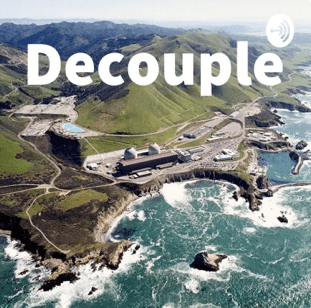Atomic Show #139 – Dan Yurman, Charles Barton, Rod Adams discuss recent atomic envents
It has been more than a month since the last show. Many apologies. Dan Yurman and Charles Barton agreed to help me get back into the rhythm by chatting for a while about current atomic events.
We discussed a recent Moody’s special report on companies considering new nuclear power plants – not very positive, TVA nuclear plans, small reactors, the DOE semi-decision on a loan guarantee for The American Centrifuge Project proposed by USEC, and Russian energy deals in Turkey.
Podcast: Play in new window | Download (Duration: 1:20:05 — 36.7MB)
Subscribe: RSS





Cool! New ‘cast. Been a while. Now to download.
Whoa. 37 MB. Overnighter out here in the dialup sticks. Good to know it’s here though.
Hi Rod
I enjoyed the conversation but in particular your comments about the possibility of achieve break-even conversion on the Uranium-Plutonium cycle. Charles Barton disagree expressing the common view that such breeding was only possible in the fast spectrum. I found some information about a possible light water breeder using the U-Pu cycle rather than the original LWBR on the U233-Th232 cycle. As far as I understand it, using the epithermal spectrum Pu 241 is a good fissile fuel so using this in combination with U238 to Pu 239 successful breeding may be established. What do you think, I am very interested in discovering more about achiveing break even in the epithermal spectrum.
Look forward to your response. Great show. Alex
Alex – Glad you enjoyed the show. There has indeed been a good deal of intellectual work done on achieving a breeding ratio of close to or even exceeding 1.0 using uranium-plutonium fuels in an epithermal spectrum. The key is in selecting just how moderated the core is – if you squeeze out some moderation and add more fuel material, you can achieve break even.
The Japanese have done some good work in this area. Here is one example paper:
http://www.hitachi.com/ICSFiles/afieldfile/2004/09/07/r2004_03_105.pdf
One of the real keys here is to realize that there is no urgent need to produce a lot of excess fissile material. As we modify reactors to approach 1.0, the depletion rate of fissile material in the world slows down. If there is a finite amount of fissile material accessible, reactors with a conversion ratio close to 1 will move the resource depletion date way out to the right. That gives us plenty of time to develop other sources of competitive power that will enable human prosperity for millennia.
Alex – here is a presentation with some useful information for additional searches on the subject of thermal/epithermal breeding:
http://gcep.stanford.edu/pdfs/UVaodfDrAb3BdgeRCpoy-w/17-Greenspan-GCEP-Workshop.pdf
Nice discussion, I enjoyed it. In the discussion Dan refers to an EIA report regarding power uprates. He says that the 2009 EIA report estimates that 20% (20GW) will come from uprating of existing plants. I looked and searched but I couldn’t find a report that states this, can you provide a reference to this for me? The NRC maximum available uprates are the extended power uprates, which provide up to 20% addtional power. The largest uprates, 20%, have only occurred in BWRs, which is approximately 1/3 of the US fleet. Therefore, I don’t see how 20GW could be added and hence my interest in the reference to the EIA report. Thanks.
Thanks for the links Rod, Good reading. Hope these concepts get developed because many people I am sure would like to see us really getting into taking full advantage of the heavy metal’s energy density. Once this is done one a large scale then humanities energy requirements are effectively limitless. Alex
Getting a loan guarantee from the government sounds a lot like getting a loan from a bank. In order to get the loan, they first need to prove they don’t need it.
Here’s a link to an interesting in-depth presentation of the “Travelling Wave Reactor” concept presented by John Gilleland chief scientist with TerraPower, LLC:
http://www.nuc.berkeley.edu/node/1077
If it works as advertised it could be a revolutionary “game changer” to such a degree that it may frighten off prospective utilities from committing to conventional fission project outlays.
Jess: perhaps Dan Yurman was referring to the potential power uprates made possible by annular fuel cores according to studies at MIT (50% for PWRs, ~23% for BWRs):
http://web.mit.edu/canes/publications/abstracts/nfc/nfc-100.html
and here
http://dspace.mit.edu/handle/1721.1/34448
David Frum, former Bush speechwriter, discussed “betting the farm” sized investments that are a factor in holding back new nuclear in the US. He thinks increasing the size of utilities would help.
http://www.frumforum.com/conservatives-heart-nuke-power
He followed up the next day with an answer to the “progressives” who claim to be baffled or surprised that many conservatives support nuclear.
http://www.frumforum.com/more-nukes